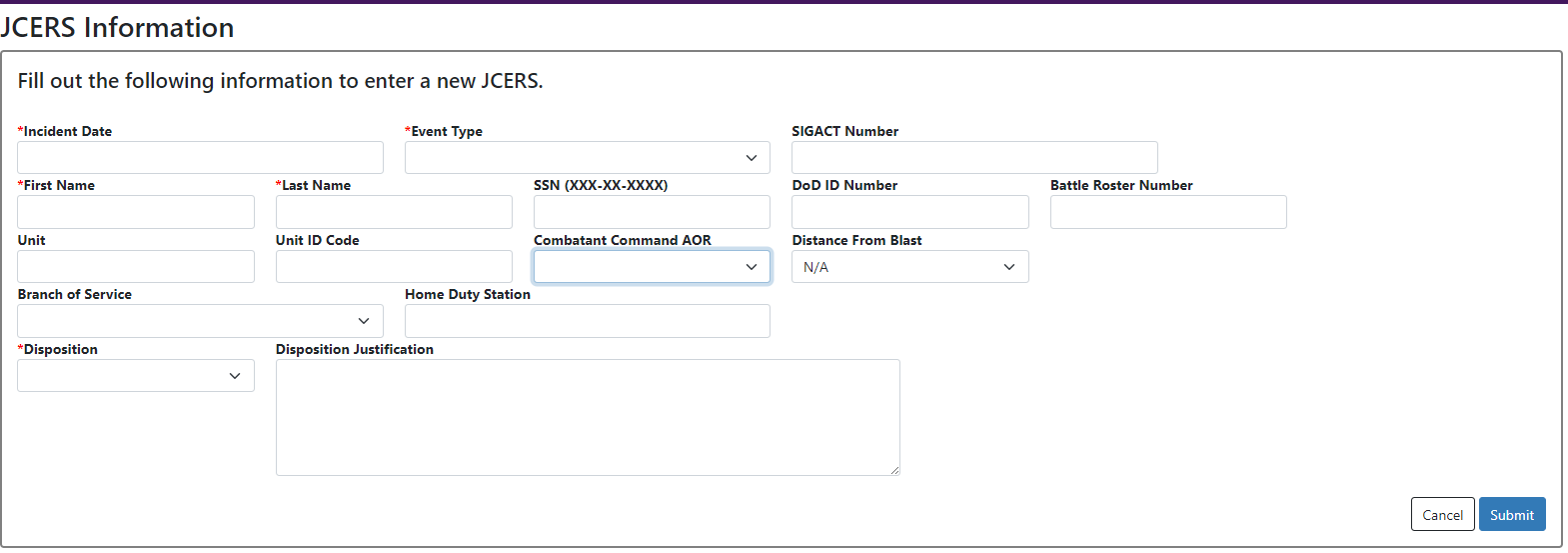FAQs
What is JTAPIC?
JTAPIC is a partnership among DoD intelligence, operational, medical, and materiel development communities that collects, integrates, and analyzes injury and operational data. The goal is to better understand vulnerabilities to threats and to improve tactics, techniques, and procedures and materiel solutions to prevent or mitigate traumatic injuries.
What is JINCS?
JINCS (JTAPIC Information and Collaboration System) supports the JTAPIC mission by providing a unified secure information management system that provides a collaborative environment for the collection, integration, analysis, and storage. Users can retrieve this information for the purpose of analyzing and disseminating actionable informed solutions that mitigate or prevent injury through a full range of military operations. JINCS assists in allowing the JTAPIC Program Management Office (PMO) and the JTAPIC Partnership to function at their highest capacity in producing actionable analyses to aid the Warfighter. The system captures data, tracks requests for information (RFIs) from submission to completion, houses data relevant to the analyses requests, encompass tools to aid the Partnership in being able facilitating their analysis in one place, and unify the current systems to utilize various databases. The system provides customers throughout the Department of Defense (DoD) and JTAPIC partners the ability to retrieve vital analysis and perform vital roles that gives decision-makers the concrete findings they require.
How specifically does JTAPIC help the Warfighter?
The Army has used the actionable information provided by JTAPIC to change the way it protects Warfighters from combat injuries. Modifications and upgrades have been made to vehicle equipment and protection systems, such as seat design, blast mitigating armor, and fire suppression systems. Combatant commanders have altered their tactics, techniques, and procedures in the field as a result to the incident analyses and near real-time feedback on threats provided by the JTAPIC program.
Who can I contact with questions?
If you have any general questions for JTAPIC, please go to the Contact Us section of the JTAPIC webpage.
What is a Request for Information (RFI)?
Analysis Requests, also known as RFIs or Requests for Information are an avenue for a customer to obtain information on areas relating to preventing or mitigating injuries to the warfighter. These could run the range of combat event injuries to potentially accident causing injuries.
What is the JTAPIC Product Library?
The JTAPIC Product Library supports creation and search of products, analysis requests, or projects that have descriptions accompanied by data files, analyses, or reports. The Library provides a central location to both upload new products and find existing ones. Classified products are noted on unclassified JINCS with a short description, but the products themselves are only accessible on the classified version of JINCS located on SIPRnet.
How do I submit a Request for Information (RFI)?
Once you have obtained a JINCS account you can access the system and create a RFI. Also, on the JTAPIC home page in the upper right corner is a link to "Submit Analysis Request", clicking on that link will take you (through JINCS Login) directly to the page for submission. Information on getting started with the RFI process can be found on JINCS in the FAQs or in the System Documents section. After completing your submission a JTAPIC Project Manager will be in touch with you in a timely manner to discuss your request.
Can JTAPIC answer my request?
Submit an RFI request. JTAPIC will then evaluate your request and contact you if additional information is needed. At this point you will be informed if your request can or cannot be answered by JTAPIC
There are four typical routes a request can take at this point.
What is the RFI process?
After you have submitted your RFI request, it will be determined whether the request fits the “definition” of an RFI within JTAPIC's mission (see “Can JTAPIC answer my request?” also in the FAQs). If approved, a PMO Project Manager will get in touch with you for an initial discussion.
A RFI team is then formed and a follow-up conversation with the team will occur. This conversation will allow you to communicate to the analysts exactly what you hope to get out of the analysis and will allow the analysts a chance tell you what type of data is available, what type of analysis can be provided, and when you can expect a finished product. This telecom allows for a back and forth dialogue between you and the JTAPIC analysts so questions can be discussed and answered up front. Once the telecom has occurred, the RFI will be scoped to provide a list of tasks to complete and the timeline for completion.
You, as the customer, can see the timeline. As tasks are completed, they will be checked off, so you can track the progress of the RFI in the system. If any questions arise or potential delays come up, you will be notified by the JTAPIC PMO.
Upon completion of your request you will receive an email with a link to the analysis or the attached analysis. Additionally, if you would like to speak directly to the analysts who performed your request, you can ask for a briefing to review your RFI analysis product.
As part of our ongoing efforts to improve our products and process, JTAPIC always appreciate customer feedback from our customers. After you receive your completed product we encourage you to share your feedback to your assigned project manager of your RFI.
What is JCERS?
JCERS stands for JTAPIC Concussive Event Reporting System. This system is in development to support DoDI 6490.11 "DoD Policy Guidance for Management of Mild Traumatic Brain Injury/Concussion in the Deployed Setting".

Click image to see larger version.




